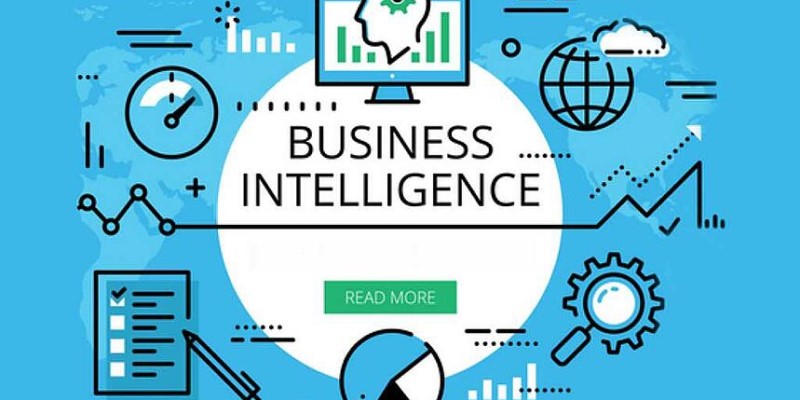In 2021, business intelligence has gone mainstream. Although in one way or another, it has always been a part of enterprise decision-making, as a buzzword, it is catching on right now when there is greater competition and lower entry barriers.
In the coming years, whether you succeed, fail or stagnate as an enterprise, depends on your ability to use business intelligence tools. If you become a leader in using business intelligence tools in 2021, your success is assured. Let’s explore how.
Doing a business is all about decision-making. Great business leaders depend on their instinct and experience but even the instinct is based on their uncanny ability to read the data and interpret it for their benefit. Especially in today’s world, there is no excuse for not using BI simply because there is an overwhelming amount of data available. Data scientists often quip that more than 90% of the data that exists on the web has been created in the past two years (a 2018 claim).
How Do You Become A Leader In Using Business Intelligence Tools?
Just like in any other technology, although there is no dearth of people claiming to understand BI, actually there are very few people who can grasp its true potential. This is where you can show your leadership. How?
By recognizing not just the importance of data, but how that data is collected, preserved, formatted, and then used. The backbone of every business intelligence service is the data it ingests. Without data, there is nothing to analyze.
The Google search engine has crawled and indexed billions of web pages. Since people are interested in search engine traffic, there is a mutual understanding among the company as well as its users towards how important it is to crawl and index the web pages. Google wants to crawl them, and the publishers want to submit them. Both understand each other.
Hence, you need to cultivate a data culture in your organization. Let your employees and business partners know how important it is to capture and preserve data at every possible touch point.
Educate yourself and your employees. Help them understand that data never lies. Everything begins after that.
Having said that, the ultimate success of your business intelligence software lies in its ability to take in raw data and then present to you actionable insights in the form of visualization, conversational interactions and the traditional rows and columns of a spreadsheet.
Aside from this, you can make the following uses of business intelligence to become a leader in this stream, in 2021.
Ever Ready Availability Of Data And Insights
We live in a highly unpredictable world. Who would have thought that we would be hit by such a big surge of the epidemic and our entire work culture would be transformed? Businesses and executives need to analyze KPIs sometimes on a daily basis and then take decisions. Real-time delivery of data and insights is extremely important these days. Your decision makers and stakeholders should be able to log into the dashboard immediately to see the current status of the metrics, and change the course of action, if need be.
The Right Data At The Right Time
Although a typical business intelligence system gobbles up huge amounts of data, it doesn’t mean it is free for all. Data is valuable only when the right data is available at the right time. Your decision makers don’t always require a 50-page report full of data rows and charts. Maybe just a single data point is required. For example, someone may need to know the number of orders placed by 5 PM on the current date, about a particular brand of T-shirt, and he or she may not require an item -wise report of every item sold during that week.
One Screen At A Time
Most business intelligence tools these days are used on mobile devices, and there isn’t much real estate available on smaller screens. Nonetheless, your data must be able to paint a complete picture in whatever space is available. When your C-level executive wants to have a quick snapshot of aged receivable, for example, all the necessary information must be available to him or her within a single screenshot, without the need to scroll. This will also help him or her to capture screenshots and exchange them with whomever he or she feels like.
Integration And Collaboration
When your data lives in the silos of different departments, without being able to communicate, it is of little use to your BI system. Intelligence must be collective. Your marketing department must be able to know what is going on in your sales department and your sales department must be able to know what is going on at different manufacturing units and different manufacturing units must be able to access data about your supply chain. For data to become intelligence, it needs to take into account the larger picture.
When you work with a business intelligence agency or a business intelligence software development company, make sure that your BI setup is able to communicate with your legacy systems as smoothly as it is able to exchange information from cutting-edge cloud-based IT assets.
Incorporation Of Artificial Intelligence, Machine Learning And Neural Networks
There are multiple reasons to incorporate AI, ML and neural networks into your BI tools. Great strides are being made in these fields. The advantage of using machine learning and artificial intelligence is that your BI systems continuously learn from the information they are processing. The more data they process, the smarter your BI systems become. This saves you from the trouble of writing complicated programs to get the results that you need.
Conversational queries powered by neural networks allow your executives to interact with your BI tools as if they’re talking to someone, instead of having to cram complicated SQL commands. The same information can be retrieved by different but similar verbal expressions.
What makes you a leader in the use of business intelligence tools is the ability of your employees or your team members to use the tools to obtain actionable insights as quickly as possible, and as easily as possible. This, coupled with your ability to nurture a data culture, can certainly make you a leader in the use of business intelligence software.
You may also like
-
IPTV Abonnement: The Key to Unlimited TV Entertainment
-
E-commerce Automation Tools: Revolutionizing Online Retail
-
2.4 Ghz and 5 Ghz difference, which is right for your wireless network?
-
All That Sparkles: A Manual for Wholesale Diamonds
-
What Is the Role of Managed Cybersecurity Services in Protecting Your Business?

